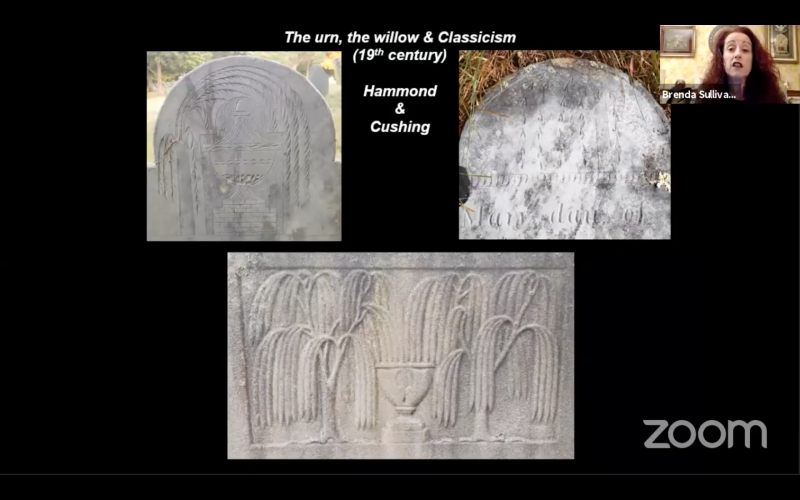Gravestone girls talk Mattapoisett cemetery history
MATTAPOISETT —Cemeteries are for the dead and those in mourning. For Brenda Sullivan, they are also a rich source of history.
At a Zoom lecture on Oct. 8, Sullivan taught guests about the significance of the gravestones found in the seven cemeteries in Mattapoisett.
Sullivan, a member of the Gravestone Girls who travel around New England exploring cemeteries and selling decorative gravestone art, was asked by the Mattapoisett Museum to check out the sites and share what she found.
One of the main points that she told guests was that throughout the centuries that people have lived in the town, life often imitates death.
For example, in the Victorian era, people were dramatic and architecture was grandiose. In the same way, gravestones became large monuments to the dead designed in a way to reflect what was contemporary in culture.
As the 20th century began, there was a cultural backlash against the Victorian style and a shift to modernity. And as such, gravestone styles shifted to smaller, more contemporary styles.
“What happens in the land of the living happens in the land of the dead,” Sullivan said.
She went on to explain that gravestones throughout Mattapoisett depict images that were symbolic of the times that people died.
When the focus shifted to calling upon greek symbolism in the 19th century, images like urns and willow trees were depicted.
In the 1900s, death became a topic that was talked about less, so cemeteries “became a place we don’t go to often,” Sullivan said.
What were once places with intricate landscaping where families picnicked and regularly visited the dead, became less of a destination.
But in the last 30 years, she said that people are now making gravestones more personal.
“I can now go into the cemetery and ‘meet’ people,” Sullivan said.
In Mattapoisett, she noticed symbols like a fisherman in a canoe, Red Sox logos, tractors, animals, and even a lighthouse with a penguin outside of it.
“We want to show what we did while we were here,” Sullivan said.
And she wants others to go look at gravestones like she does too. Sullivan explained that having events like art markets, or beekeeping on the grounds of a cemetery can help pay for the maintenance costs.
“It’s a way to keep the cemetery going, to keep the community together, and to keep them nice,” Sullivan said.











